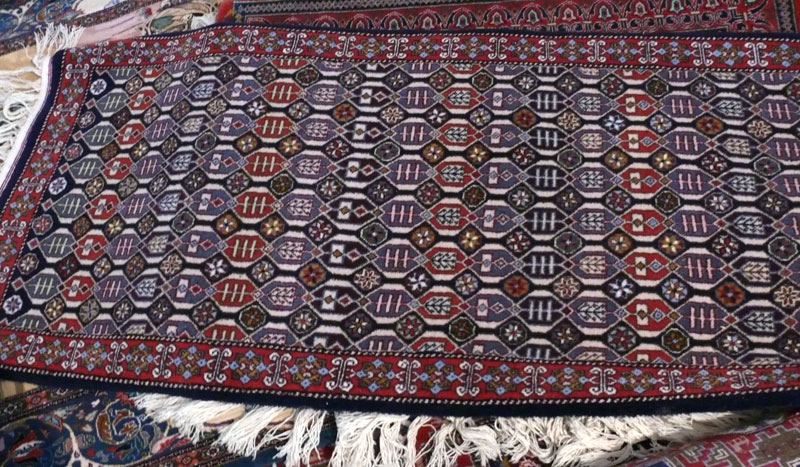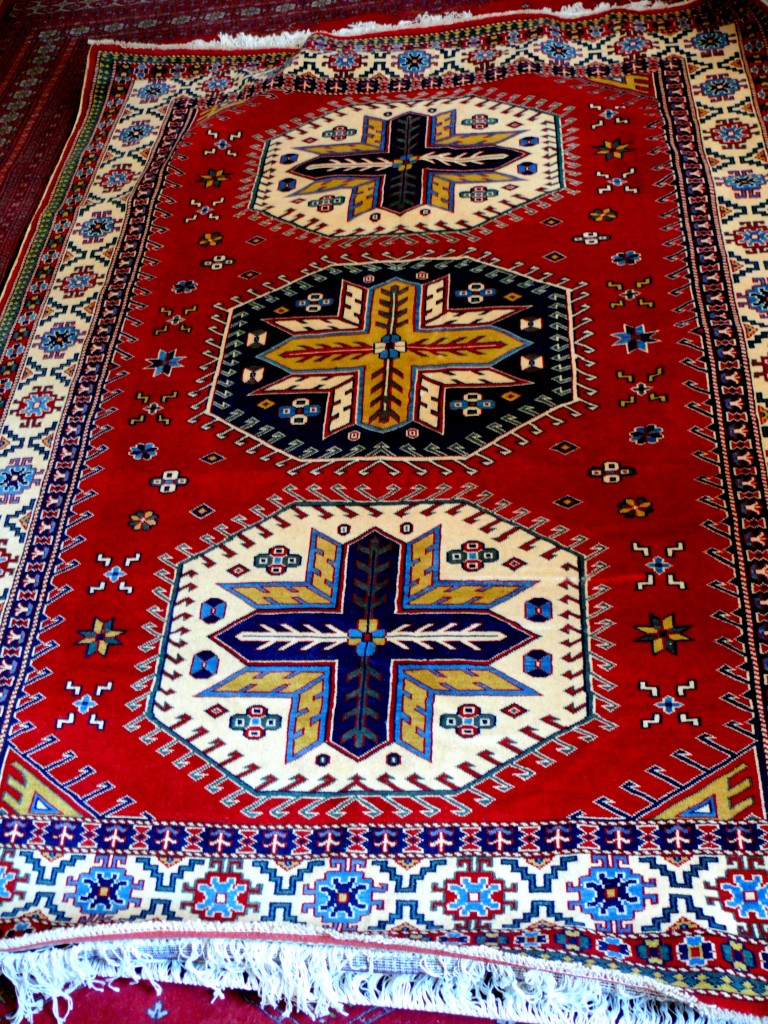Azerbaijani Carpets: 9 Things You Need To Know About Them Before Buying
Azerbaijani carpets are well-known all over the world for their quality and high artistic value. This carpet can become a wonderful investment for your house: it will serve for several centuries and not only will lose its colours and attractiveness but will become even more valuable and expansive. However to buy a really quality piece you need to know several things about carpet making in Azerbaijan and I am happy to share them with you:
1) Azerbaijani carpets can be flat-weave and pile weave. The most popular type of flat-weave rugs produced now in Azerbaijan are called “Soumak” and”Kilim” and produced from sheep wool. Carpets and “Soumak” have absolutely different production process and patterns. “Soumak” rugs made in the north of the country are more expansive than those which are produced in the south because they have higher density.
2) Carpets with complicated pattern and delicate ornaments have high density and it is more difficult to make them. Have a look at the carpet below, it has very large elements, the central field has very few details and the border is also very simple. So this rug was produced very quickly, has low artistic value and most probably low density (see point 9 on how to check it). The price for this rug shouldn’t be high.


3) There are seven carpet producing regions in Azerbaijan: Baku, Shirvan, Quba, Tabriz, Qarabah, Genca and Qazakh. Each region had its own technology, typical patterns and colours.


4) Main colours used in Azerbaijani carpets are red, blue, green, yellow and cream. Carpets which have turquoise background for example are most probably produced in Iran as there it is a very popular colour. Every region has its popular colour palettes and by knowing them you can easily identify where the carpet is coming from.
5) Azerbaijani carpets are mostly made from wool (lamb or sheep). There is only one silk producing region in Azerbaijan which is Sheki. The amount of produced silk is very little, due to that reason the prices for a real silk carpet made in Azerbaijan are extremely high. Most of the shops in Baku sell Persian style silk carpets produced in China (sometimes also hiding this information from buyers).

6) Normally sheep are sheared twice a year: in autumn and in spring. Wool sheared in spring is softer and brighter. The same characteristics apply to a lamb wool comparing to a sheep wool. Another specialty of the lamb wool is that it absorbs only natural dyes unlike sheep wool which can absorb even artificial colourants. It is very interesting which ingredients are used for making wool dyes. For example, for getting yellow tint an onion is used, for brown – hazelnut. That is why lamb wool carpets will mainly have the same colour palette which is red, blue, yellow and brown.


7) Behind every carpet pattern there is a story to tell. Normally it represents simple and homely life of women who make it and a scenery which they see every day from their window: a flock of sheep, grazing horses, flowers and birds. Sometimes these are symbols which have come to our days from ancient times. Every village has their own patterns and by knowing them you can understand where carpet was made.
8) Some of the carpets sold in Azerbaijan have the following effect: if you turn them upside down they will drastically change its colour. The reason is that some carpet manufacturers wash the carpets with softeners and then iron them to achieve the smoothness of the pile. They can also tell that this is the effect of making carpet from baby sheep wool – bare in mind that this can be just a marketing trick. I haven’t seen the place in Azerbaijan where somebody will produce carpet made from “baby sheep wool”.
9) Density. This is one of the most important thing to look at when buying a rug. The more density, the stronger the carpet, and the higher the price. Low density is considered to be as from 25X25 knots per square decimeter. High density is 45X45 knots and higher. 60 X 60 knots is a very high density used for producing rugs for Sultan’s palace. Nowadays it is very rare to find carpets of this quality. How to find out? Have a look at the bottom side of the rug, you can easily calculate the knots: just put the ruler and measure square decimeter and then count the knots vertically and horizontally – this will be the density of the carpet. If the carpet is made properly and has a good density, there is no special care needed to maintain it: it is enough to vacuum clean it from time to time and your carpet will look like a new!







